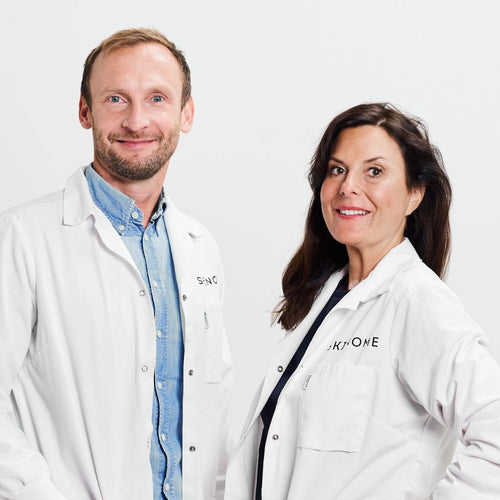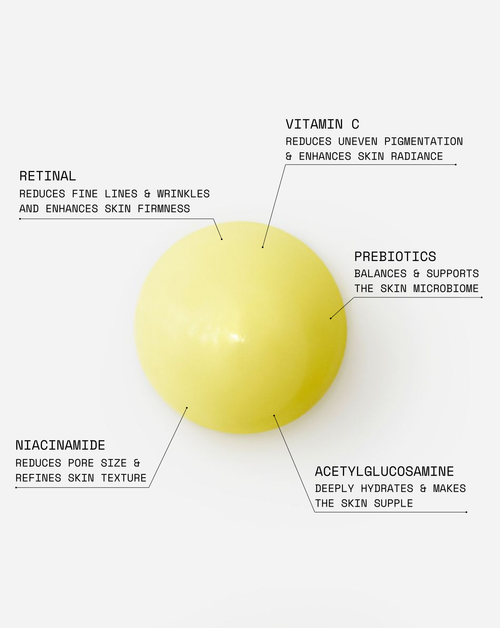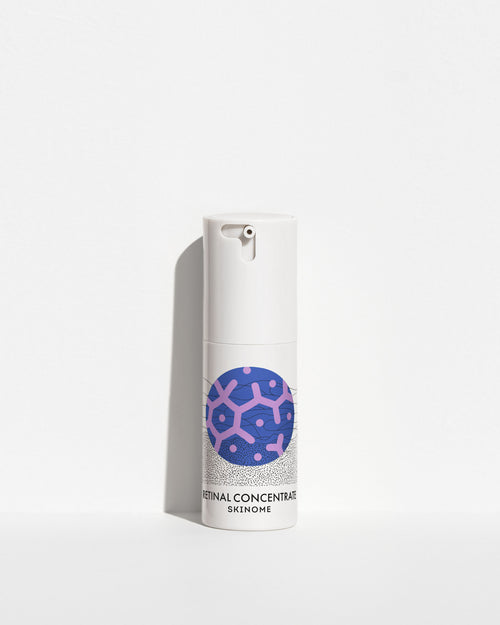Understand your skin type
A good start is to think about your skin type – is your skin normal, sensitive, dry, oily or a combination of these? Test what suits your skin best and take advantage of our skin care tips:
Normal skin
If you have normal skin, you experience that the skin feels elastic and soft and you have no obvious problems with dry or oily areas on the face. An important factor is that the skin cannot be felt, i.e. you have no sensation of it (the skin does not sting, itch or tighten).
Tip: If you have normal skin, you also don't have any specific problems but may want to moisturize your skin, especially here in the Nordics because of our dry and cold climate. Our skin is exposed to both sun, low humidity (especially in winter), exhaust gases and temperature changes, which contribute to dehydration and thus an increased need for moisture binders in the skin. Products that contain ingredients such as glycerin, salts, sugars, the building block for hyaluronic acid - N-acetyl glucosamine or urea/urea are effective at binding moisture in the skin, which leads to active hydration.
Our skin flora also contributes naturally to moisture-binding substances in the skin - therefore do not disturb it with overuse of skin care or cleansing (it does not want to be disturbed and will thank you for the help!). All external influences also lead to the formation of free radicals which, among other things, affect the aging of the skin. Free radicals are something that antioxidants are good at breaking down, invest in a product that contains antioxidants, such as vitamin C and/or minerals such as manganese. Also look for packages with airless pump systems that reduce contact with oxygen and thus reduce the risk of degradation of the antioxidants. Normal skin can feel good from the application of calcium, which contributes to increased cell renewal in the epidermis.
Sensitive Skin
Many people who feel that they have sensitive skin describe it as itching, burning or stinging and that you can have strong reactions when the skin comes into contact with cosmetics, skin creams, soap and even sunlight. If you have sensitive skin, you probably feel a deterioration during the winter when we have a cold and dry climate.
Tip: First of all, it is important that you investigate what could be the reason why you have sensitive skin, here you may need to seek the help of a dermatologist. For you with sensitive skin, it is almost more important to know what to avoid than what to add to the skin. Our skin is unique and reacts individually and differently to what it is exposed to. However, there are groups of substances that you can look out for, although many can tolerate them, there are reports that some substances cause sensitivity or irritation in the skin more often than others.
Substances to avoid if you have sensitive skin are alcohol, propylene glycol, essential oils, perfume and certain preservatives such as methylisothiazolinone, phenoxyethanol and benzoyl alcohol and ethylhexyl glycerin. A new research report also shows that propylene glycol is the substance that remains the longest on the skin, for several weeks after application (Bouslimani et al., 2019). Also, be careful with the cleansing of your skin – it is enough to use a cleansing product in the evening and only rinse with lukewarm water in the morning.
A sensitive skin can also benefit from certain anti-inflammatory substances to reduce irritation and redness - examples of these substances are: Allantoin, Panthenol, Bisabolol, Naringenin, Acetyl Dipeptide 1 Cetyl ester. Skin creams for sensitive and red skin (for example those affected by rosacea) also often contain green pigment to reduce the redness cosmetically.
Dry skin
You may experience that the skin may tighten, feel easily irritated and become irritated in certain places. This is because the production of certain oils and moisture binders that normally occurs in the skin does not work as it should and that the water therefore evaporates from the skin.
Tip: Moisture-binding substances are important to add if you have dry skin, also please be careful with the cleansing and use a mild cleansing cream. A skin cream for dry to normal skin will contain more moisturizing and moisture-binding substances such as glycerin, urea, various sugars, salts or amino acids. The skin also needs to be protected from water evaporation (TEWL) and then fat and oil are required which form a layer that traps the moisture in the skin.
Mineral oils such as paraffin and petroleum jelly work well to reduce water evaporation in the skin and are also kind to sensitive skin. However, these oils come from the petrochemical industry and are not biodegradable in nature, so for the environmentally conscious it may be good to opt out of these. Silicones also work as emollients and are good for sensitive skin, however they are also not biodegradable. Alternatives to oils, butters and waxes that are more biodegradable and at the same time reduce TEWL are vegetable oils, squalane, jojoba esters or, for example, shea butter.
In a normal state, our skin produces both oils and fats entirely on its own, such as squalene, ceramides, cholesterol, triglycerides and Omega 3/6 fatty acids. These recognize the skin and products containing these substances usually work well against dry skin.












